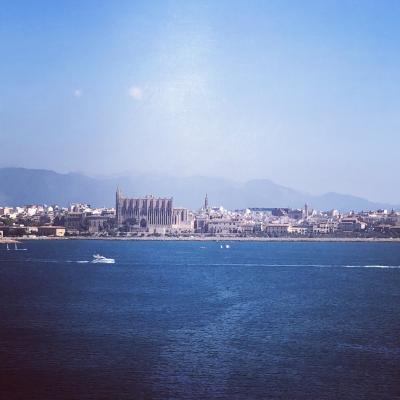What is the best way for tourists to experience the cultural heritage of the Arena of Palma?
Similar Topics
arena of palma
cultural heritage
neo-mudéjar architecture
bullfighting arena
spanish tauromachy
guided tours palma
palma cultural events
mallorcan culture
The best way for tourists to experience the cultural heritage of the Arena of Palma is to immerse themselves in the rich history and architecture of this remarkable structure while understanding its evolving role in the community. Originally constructed as a bullfighting arena in the early 20th century, the Arena of Palma, known locally as Plaça de Toros de Palma, is a striking example of Neo-Mudéjar architecture, characterized by its red brick facade and elegant horseshoe arches. Visitors should take time to appreciate these architectural details and the arena's blend of cultural influences, which reflect Mallorca’s layered history under various rulers and traditions.
To truly connect with the heritage of the Arena of Palma, tourists can engage in a guided tour that offers insights into the significance of bullfighting in Spanish culture, along with the controversies and changes surrounding the practice in the Balearic Islands. Many tours include visits to the interior of the arena, where visitors can explore the seating areas, the central ring, and occasionally exhibitions related to the Spanish tauromachy tradition and local arts. Beyond the bullfighting history, the arena is often used for concerts, cultural events, and fairs, providing an opportunity to witness contemporary uses of this historic venue and see how it continues to function as a dynamic cultural hub.
Additionally, tourists should explore the surrounding neighborhood of Palma, which is rich in traditional Mallorcan culture, to fully appreciate the arena’s context within the city. Combining a visit to the Arena with a walk around nearby local markets, cafes, and historic streets offers a broader perspective on how traditional and modern lifestyles coexist in Palma. This holistic approach enriches the visitor experience, allowing them to see the Arena not just as an isolated monument, but as a living part of Palma’s cultural fabric. By approaching the visit with a spirit of curiosity and respect, tourists can gain a deeper understanding of both the artistic and social heritage embodied by the Arena of Palma.
To truly connect with the heritage of the Arena of Palma, tourists can engage in a guided tour that offers insights into the significance of bullfighting in Spanish culture, along with the controversies and changes surrounding the practice in the Balearic Islands. Many tours include visits to the interior of the arena, where visitors can explore the seating areas, the central ring, and occasionally exhibitions related to the Spanish tauromachy tradition and local arts. Beyond the bullfighting history, the arena is often used for concerts, cultural events, and fairs, providing an opportunity to witness contemporary uses of this historic venue and see how it continues to function as a dynamic cultural hub.
Additionally, tourists should explore the surrounding neighborhood of Palma, which is rich in traditional Mallorcan culture, to fully appreciate the arena’s context within the city. Combining a visit to the Arena with a walk around nearby local markets, cafes, and historic streets offers a broader perspective on how traditional and modern lifestyles coexist in Palma. This holistic approach enriches the visitor experience, allowing them to see the Arena not just as an isolated monument, but as a living part of Palma’s cultural fabric. By approaching the visit with a spirit of curiosity and respect, tourists can gain a deeper understanding of both the artistic and social heritage embodied by the Arena of Palma.
🧩 Related Questions
Related Question
How does the shared political status within the Balearic Islands affect tourism and cultural promotion in Mallorca?
Related Question
What is the significance of the water wheel and windmill in Mallorca's agricultural buildings?
Related Question
What advice would you give to travelers wanting to explore Mallorca’s spiritual sites in a way that honors hermit traditions?

